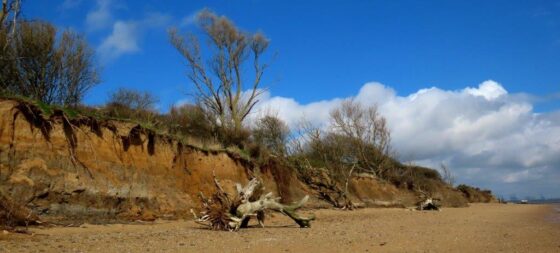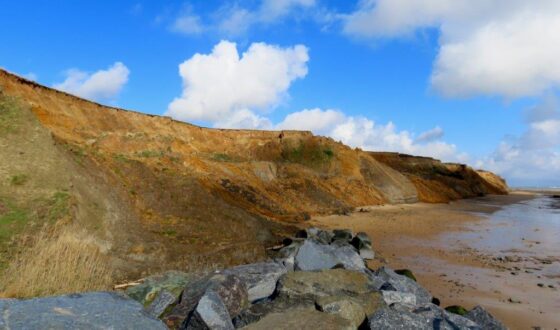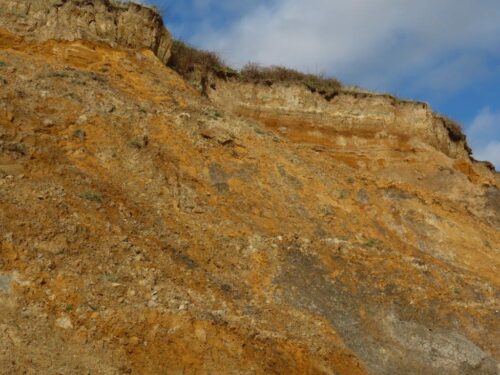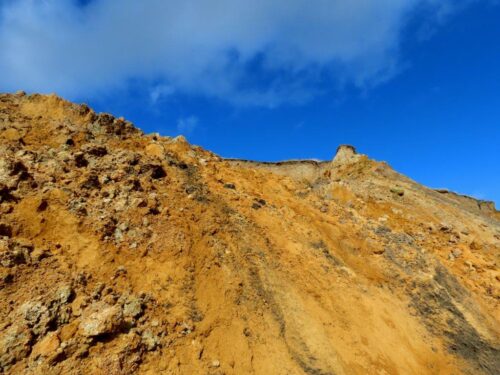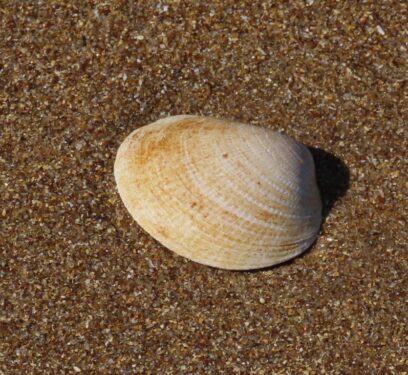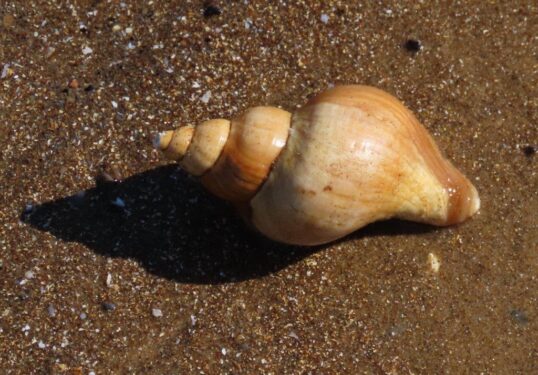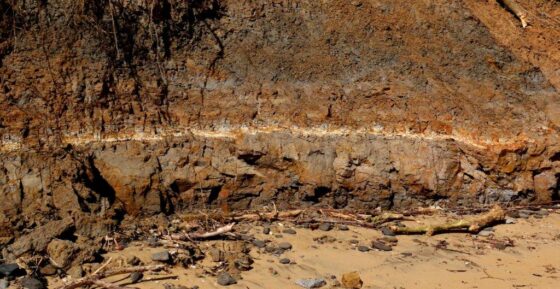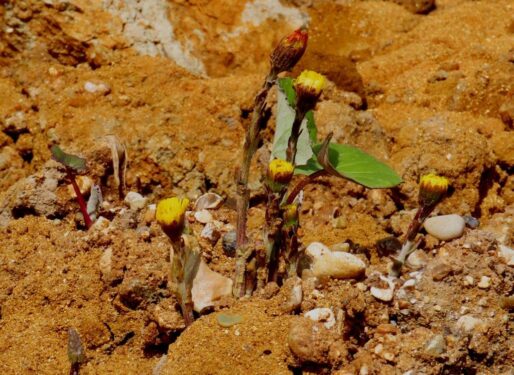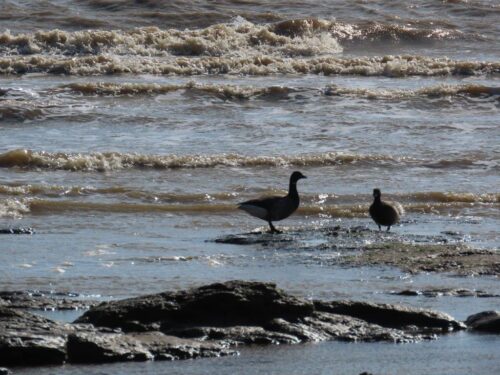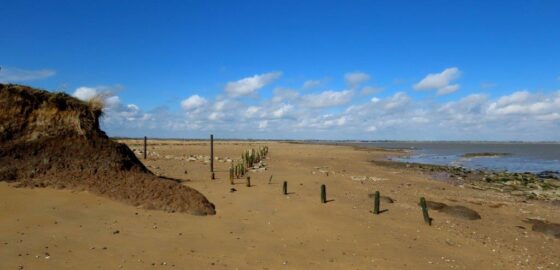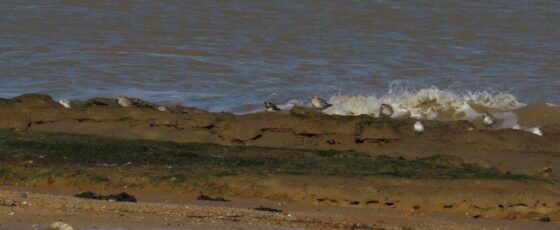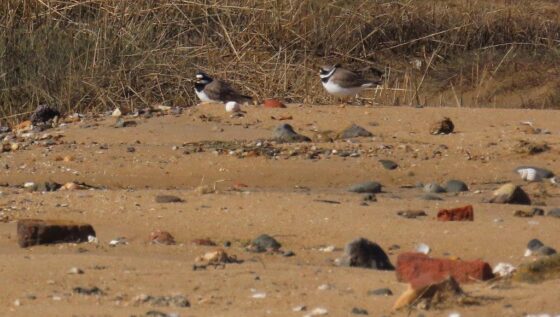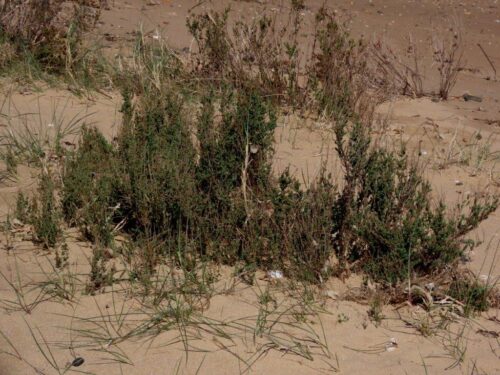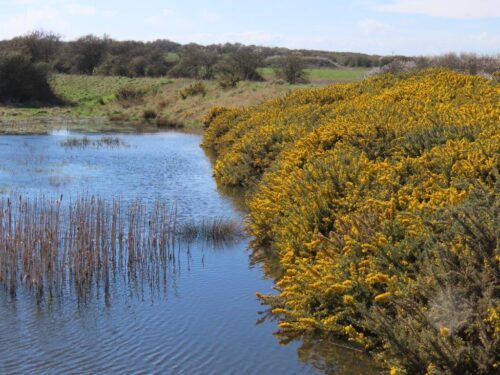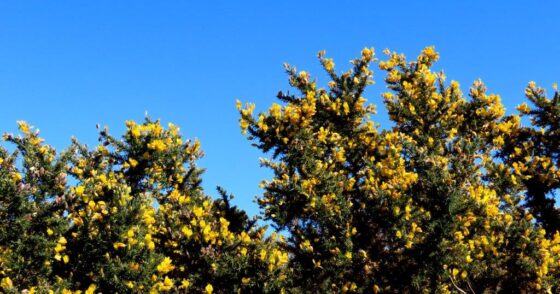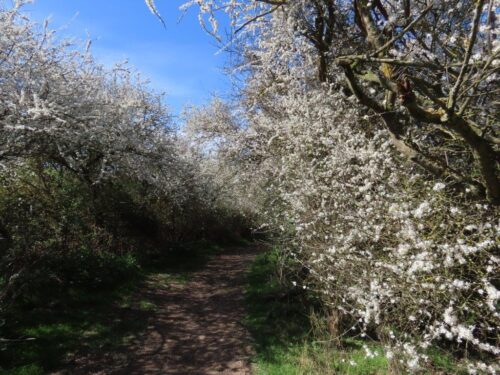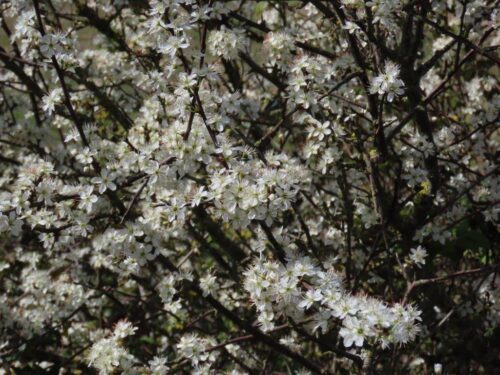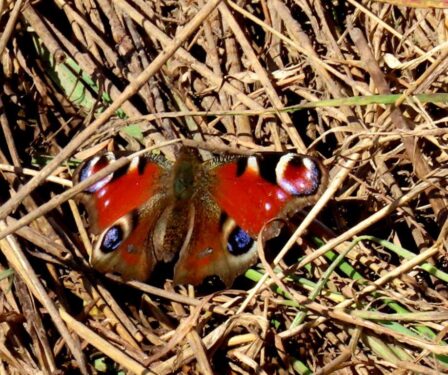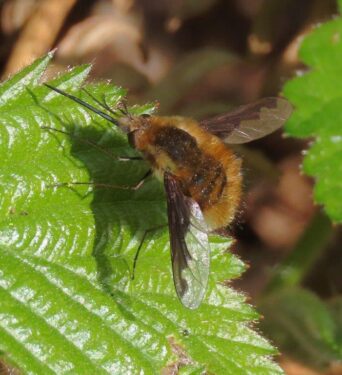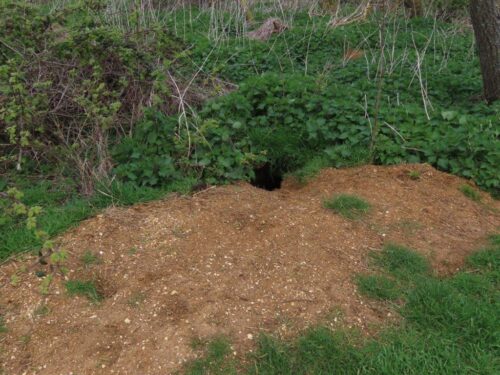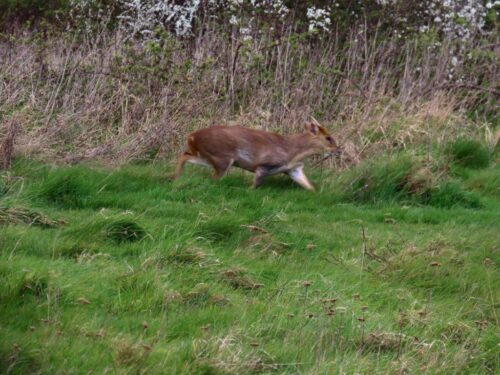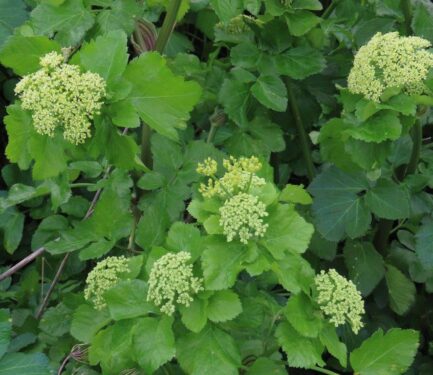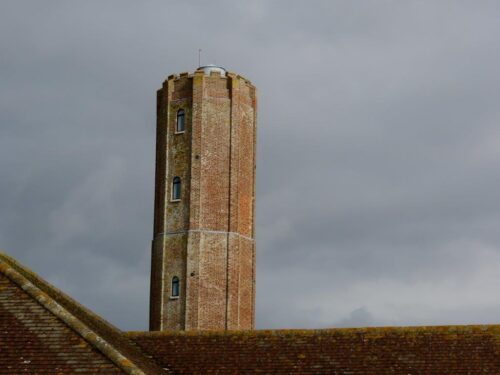Very strong, and unreasonably (given the direction) cold, southerly winds greeted our arrival at the Naze, an exposed headland and breezy at the best of times but particularly wind-lashed today, with sea-foam tumbling up the cliff. At least the forecast rain largely held off, for most of the morning it was sun and blue skies, and even got quite warm in the shelter of the scrub.
First it was down to the beach to make the most of the spring-tidal window. The cliffs of London Clay, Red Crag and loess are magnificent, actively eroding after the recent (indeed winter-long) rains, telling the story of the past 50 million years.
Pyritized wood and early glacial Crag fossils were scattered across the beach, and ash bands spoke of long-past volcanic episodes further north, with added interest from the modern shells: Portuguese Oysters, White Piddocks, Limpets and Slipper Limpets.
On the landslips Colt’s-foot was in flower, helping to feed the few solitary bees foolish enough to be on the wing.
A couple of Brent Geese fed along the tideline, while a mixed group of waders – Oystercatcher, Grey Plovers, Turnstones, Dunlins, Sanderlings and Ringed Plovers were hunkered down around the corner onto Stone Point, where a few bushes of nationally scarce Shrubby Seablite are still managing to cling on despite the battering from the waves.
Turning landward, the Gorse and Blackthorn scrub was in full flower, the latter especially floriferous this year, as seemingly everywhere. In shelter and sun, a few bumblebees and lots of Dark-edged Beeflies were foraging, along with several frisky Peacocks and a Comma.
Although birds were keeping well out of sight, there were Chiffchaffs singing everywhere, with maybe ten Cetti’ s Warblers (one seen) – their numbers seem to increase every year. A Song Thrush serenaded us, numerous Greenfinches called, sang and bounded around, and a surprisingly early House Martin flew through, riding the wind.
Small clumps of trees, probably remnants of the history of the Naze as an early 20th century golf course, included Sycamores, their beautiful purple-edged bud scales just bursting, with a couple of Hornbeams, oaks (with marble galls) and Silver Birches with Taphrina fungus witches’-broom galls. An active Badger sett under the White Poplars was unearthing the Red Crag below, and at least four male Muntjacs showed themselves, both mammals seemingly indifferent to the modern use for intensive dog-walking.
A final stroll through the scrub, the Gorse scenting the air with coconut, revealed larval webs of Brown-tail moths, a few patches of Stinking Iris (duly sniffed), Sunburst Lichens on the Elder bark and the last few ripe Ivy Berries. Alexanders, earning its keep in our lands, was in full bloom feeding early insects, and the local speciality Sea Hog’s-fennel was sprouting into fresh, green leaf among last summer’s umbel skeletons.
Pity about the wind, but it proved to be another good Naturetrek day-trip, full of all kinds of everything.
